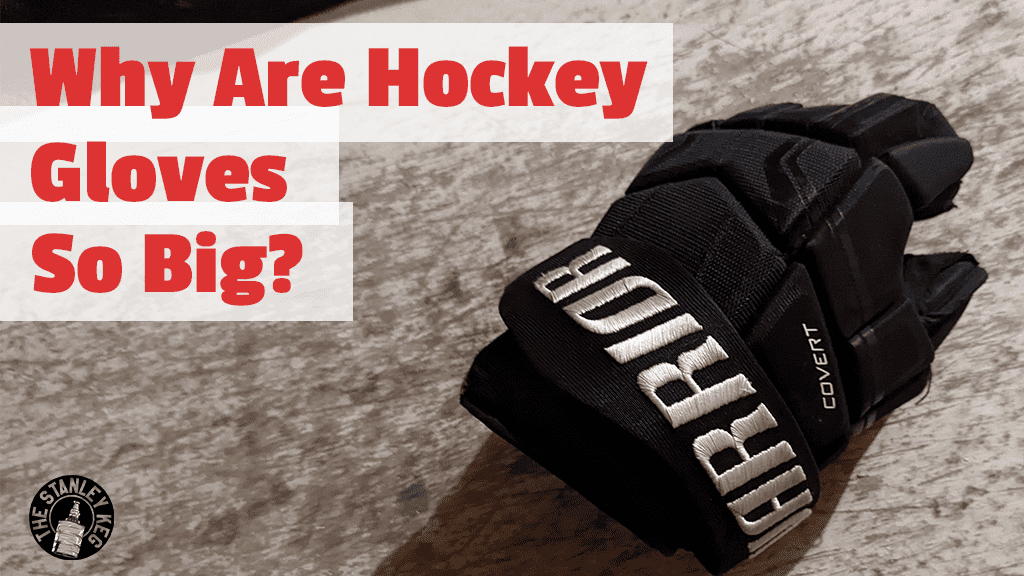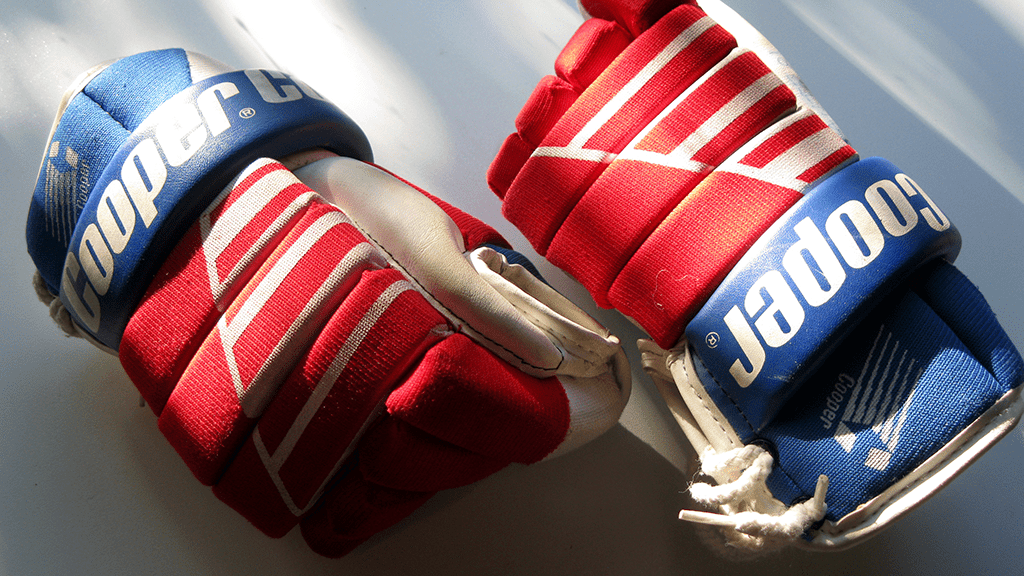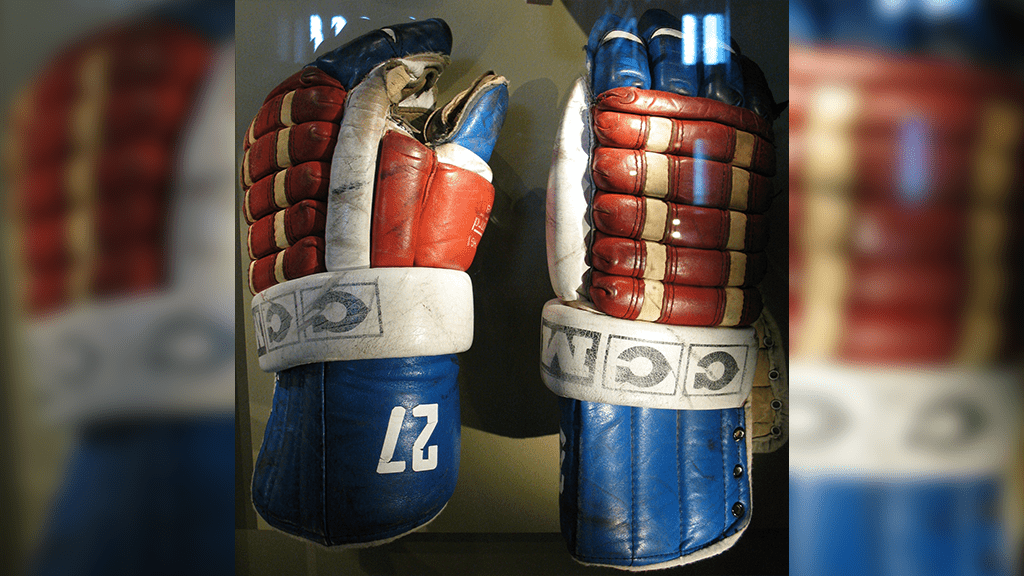
Hockey gloves look really chunky. Is all of that necessary?
Hockey gloves are made of four different parts, fingers, back roll, cuff, and cuff roll. These all need to be large enough to protect hockey players’ hands and wrists from flying objects in the game. The hands and wrists of a hockey player are regularly hit with sticks getting slammed down onto them. The hockey skater’s hands also need to be protected enough to block a shot. It is not abnormal to get hit in the hand multiple times in a game. Having large padded gloves built of leather, kevlar, and carbon fiber weave is essential to the player’s protection.
Read on to learn more about hockey gloves and what the differences are between different types of gloves.
Hockey Gloves Are Big For A Reason
Hockey gloves are large and built with protective padding for a reason. They are built to protect a player’s hands and wrists.
Players commonly get hit with sticks and pucks. The most common injury to the hand is from a slashing penalty.
Slashing is called when one player swings their stick at another player regardless if contact is made. Most times when contact is made it is accidental but that does not mean that it does not hurt.
It is also a natural instinct to reach for something. This happens a lot in hockey, you will find yourself reaching for passes or clearing attempts, and if you are a little bit on the crazy side, you might even try to block a shot with your hand.
The puck is hard and you will be glad that your hockey gloves are as big as they are after you catch a good puck in the hand.
Hockey gloves are large enough to not only protect your hands from these dangers but also your wrists. They are large enough to fill the gap from your elbow pads to your wrists, however, there are still some exposed parts of the body in there while in motion.
You can purchase gloves with larger cuffs, which is the part that protects the wrists. These larger cuffs make the gloves bigger while increasing protection but they trade mobility for more protection. A larger cuff tends to make players feel like they have less wrist mobility.

Types Of Hockey Glove Fits
Not all hockey gloves fit the same, some are larger and chunkier while others are tapered and tight.
There are three traditional types of hockey glove fits
- Anatomical
- Traditional
- Tapered
When it comes to which hockey glove fit is the best, it truly all depends on personal preference.
Do you prefer a more snug-fitting glove or do you like your gloves to be a little bit lose on your hands? perhaps you are somewhere in between. Kind of like the Maple Leafs, good enough to make the playoffs but not good enough to make it out of the first round.
Anatomical fitting gloves are the tightest fit of all the hockey glove types. They are snug around the fingers and that fit continues up to the wrist. Some players prefer a snug fit because they are able to grip and feel the stick a little bit better.
A traditional fit of hockey glove is a lot looser than an anatomical fit. Traditional fitted hockey gloves are also sometimes called 4 roll gloves. They are large, chunky, and usually have four pads of protection on the back of the hand. These gloves offer the greatest range of motion than any other fit because of how loose they fit on your hands. Some players will prefer this while other players will not.
The last type of hockey glove fit is the tapered fit. This is my preferred fit of glove. This fit is snug around the fingers but loosens up around the wrist. I prefer this because with a snug fit around the fingers you can group and feel the stick a bit better in my opinion but you have a wider wrist area so you can have a bit better range of motion when compared to an anatomical fitted glove.
All of these hockey gloves look big and chunky but a traditional fit of glove looks the largest.
How Big Should My Hockey Gloves Be?
Big enough to cover your entire hand and wrist.
Hockey gloves come in a number of different sizes, all being measured in a number of inches. Sizes range from 8” – 15” typically.
Most adult players will find themselves in the 13” – 15” range.
A simple way to determine your glove size is to take a ruler and measure from the base of your palm to the tip of your middle finger. Take whatever that number is and double it. That is your glove size.
What Are Hockey Gloves Made Of?
Hockey gloves are made of materials like nylon, foam, plastic, and faux leather nowadays. Some of the nicer gloves are made of real leather pieces, kevlar, and carbon fiber weave.
The most common material that almost all hockey gloves use is a nylon outer shell. This is the material that covers the outside of your gloves and holds all of the padding together.
Inside of the gloves is usually foam pads that are topped with a piece of hard plastic to absorb impact. Cheaper hockey gloves usually only use one piece of thick foam for protection but as you get into more expensive gloves you will find more than one layer of foam to help with absorbing impact.
The palms of many hockey gloves today are made with faux leather. This keeps the price of our hockey gloves lower but they do also wear out faster when compared to a real leather palm. Most gloves that still use real leather use goatskin to make the leather. However, there are still many high-end gloves that use synthetic leather as well. Synthetic technology is becoming better and better.
History Of Hockey Gloves

The Game of hockey was invented sometime around 1870 in Quebec. Lots of things were made of wood, including the puck.
And protective gear was not really on the top of the list. The gear that was worn was more for warmth and that included their hockey gloves. The gloves that these players wore didn’t offer much protection until the early 1900s.
That’s almost 30 years of no hand protection. That seems wild! Sure, the game was nowhere near as fast as it is now but blades were still sharp, and getting hit in the hand with a chunk of wood still hurts!
Even after adding padding to their gloves in the early years, it wasn’t much. There was not a lot of thumb protection. A player had a bad thumb injury and that got people thinking, maybe we should add p[adding there too. Hockey gloves were one of the first pieces of protective gear to get upgraded and made larger to protect players
Why are hockey gloves so large?
Simply for protection. There are pads in your hockey gloves that protect each finger, the back of your hand, the wrist, and even the sides of your hand. Gloves protect your hand using foam padding encased in nylon. These pads appear large giving hockey gloves their classic, chunky, and big appearance.
Gloves must be protective enough to guard your entire hand and wrist area against a swinging stick and a puck flying through the air that just whipped off of a player’s stick.
